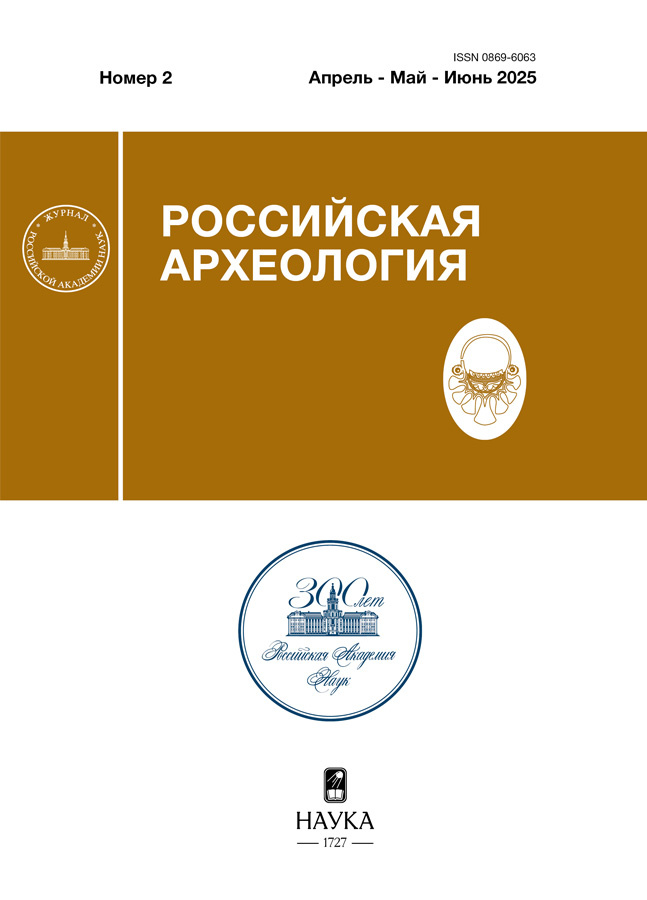Rock art in the stone age of Gobustan: an archaeologist’s view
- Authors: Amirkhanov H.A.1
-
Affiliations:
- Institute of Archaeology RAS
- Issue: No 2 (2024)
- Pages: 5-19
- Section: ARTICLES
- URL: https://ruspoj.com/0869-6063/article/view/655767
- DOI: https://doi.org/10.31857/S0869606324020013
- EDN: https://elibrary.ru/WPBYUO
- ID: 655767
Cite item
Abstract
Gobustan is home to a large group of archaeological sites and many thousands of rock images dating from the Upper Palaeolithic to the Middle Ages. Due to its extraordinary scientific and artistic significance, the Gobustan complex is included in the UNESCO World Cultural Heritage List. This paper focuses on rock images dating back to the Stone Age. An attempt is made to systematize petroglyphs, taking into account their types, artistic styles, techniques of their creation, and themes of the images. The author considers relative dating and correlation of the distinguished styles with Gobustan sites of various stages of the Stone Age. Based on the analysis, style 1 of the region’s petroglyphs is dated from the first half of the Upper Palaeolithic (no later than 25–24 kya). Style 2 is synchronized with Mesolithic sites, and styles 3a and 3b are dated, with a certain degree of conditionality, from the Neolithic and Chalcolithic.
Keywords
Full Text
About the authors
Hizri A. Amirkhanov
Institute of Archaeology RAS
Author for correspondence.
Email: amirkhanov@rambler.ru
Russian Federation, Moscow
References
- Abdullayev R., Şirinli S., 2020. Qobustan. Cindirdag-Yaziltege ve Sona qava petrogliflerin korpusu. Baki. 495 p.
- Amirkhanov Kh.A., 2023а. The Gobustan Neolithic culture. Istoriya, arkheologiya i etnografiya Kavkaza [History, archaeology and ethnography of the Caucasus], vol. 19, no. 2, pp. 435–459. (In Russ.)
- Amirkhanov Kh.A., 2023б. Three types of industry in the Stone Age of Gobustan. Rossiyskaya arkheologiya [Russian archaeology], 3, pp. 7–23. (In Russ.)
- Dzhafarzade I.M., 1973. Gobustan: naskal’nye izobrazheniya [Gobustan: rock images]. Baku: Elm. 348 p.
- Faradzheva M., 2005. Archaeological complex of Gobustan in the Upper Palaeolithic. Arkheologiya, etnologiya i fol’kloristika Kavkaza [Archaeology, ethnology and folklor studies of the Caucasus]. Baku, pp. 168, 169. (In Russ.)
- Faradzheva M., 2009. Naskal’noe iskusstvo Azerbaydzhana [Rock art of Azerbaijan]. Baku: Aspoligraf. 372 p.
- Faradzheva M., 2015. Cultural-historical context of the archaeological complex of Gobustan. Rossiyskaya arkheologiya [Russian archaeology], 4, pp. 50–63. (In Russ.)
- Faradzheva M., 2021. On the dating of rock art in Gobustan (Azerbaijan). Istoriya, arkheologiya i etnografiya Kavkaza [History, archaeology and ethnography of the Caucasus], vol. 17, no. 3, pp. 658–683. (In Russ.)
- Formozov A.A., 1969. Ocherki po pervobytnomu iskusstvu [Studies in prehistoric art]. Moscow: Nauka. 136 p.
- Museibli N., 2017. Gobustan. Issledovaniya i gipotezy [Gobustan. Research and hypotheses]. Baku: AFPoliqraf. 141 p.
- Rustamov D.N., 1986. Gaya Arasi – a site of goitered gazelle hunters. Arkheologicheskie i etnograficheskie izyskaniya v Azerbaydzhane 1985 goda [Archaeological and ethnographic research in Azerbaijan in 1985]. Baku: Elm, pp. 7, 8. (In Russ.)
- Rustamov D.N., 1990. Rock images of Gobustan. Problemy izucheniya naskal’nykh izobrazheniy v SSSR [Problems of studying rock art in the USSR]. Moscow: Nauka, pp. 99–103. (In Russ.)
- Rustamov D., 2000. Gobustan – ochag drevney kul’tury Azerbaydzhana [Gobustan – the centre of ancient Azerbaijan culture]. Baku: Nurlan. 62 p.
- Rustamov Ć., 2006. Gobustan – the ancient centre of Azerbaijan culture: Devoted to the 80th anniversary of archeologist Jafargulu Rustamov. Baku: Nurlar. 93 p.
- Rustamov Ć., Muradova F., 2008. Qobustan. Kiçikdaş abidəleri. Baki. 229 p.
- Sigari D., 2013. Palaeolithic rock art in Gobustan, Azerbaijan, the rock 44 of Böyük Das, Gobustan. Journal of Iranian Archaeology, 4, pp. 15–22.
- Sigari D., Shirinli S., Abdullayev R., 2018. Gobustan Rock Art Cultural Landscape (Azerbaijan). Encyclopedia of Global Archaeology. Cham: Springer, pp. 4618–4625. https://doi.org/10.1007/978-3-319-51726-1_2827-1
Supplementary files
















